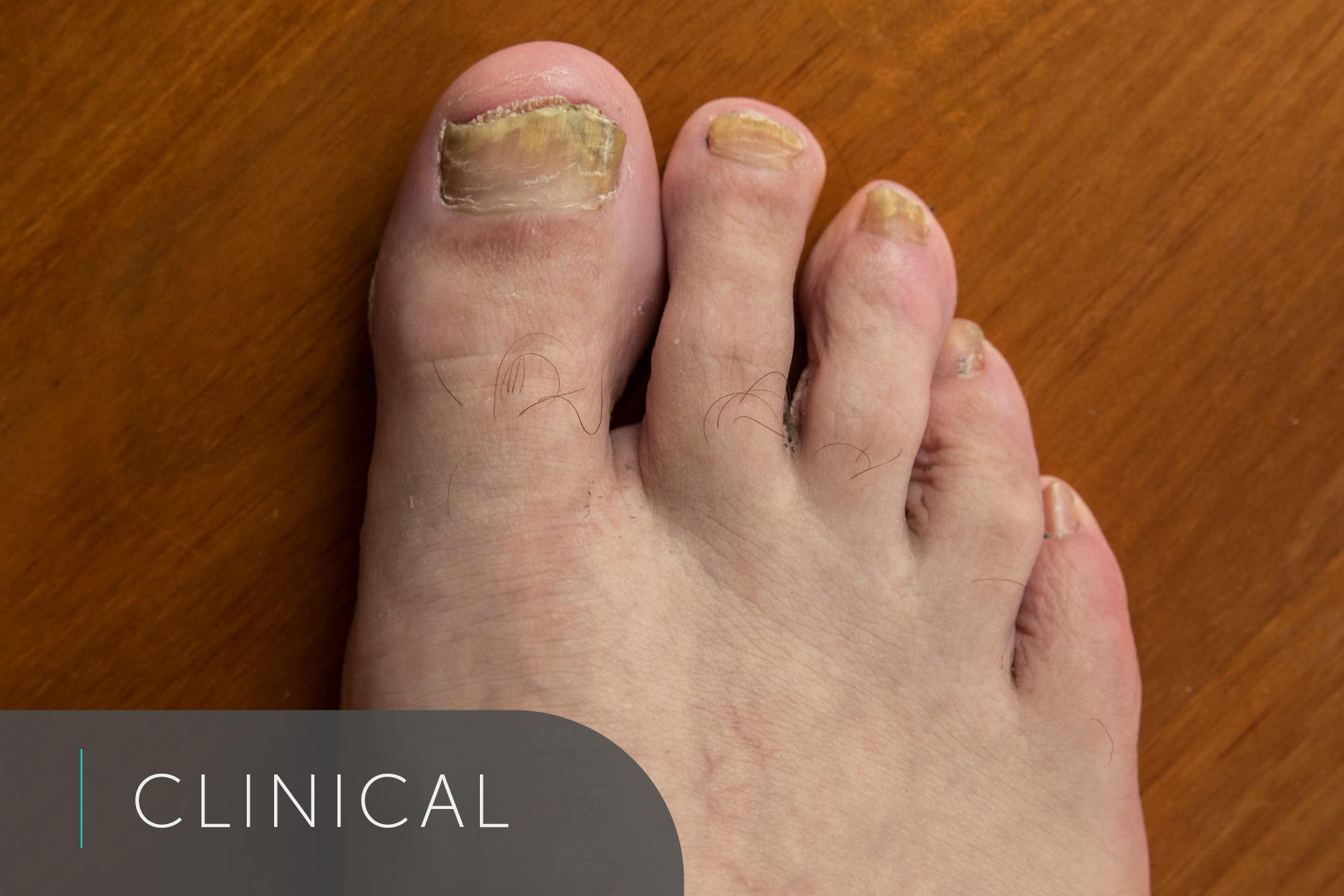
Fungal nail infection is frequently seen and treated in our general podiatry (chiropody) clinic. Our experienced HCPC registered podiatrist Megan gives us a bit more insight into this condition, the symptoms you might experience and how you can treat this unsightly condition.
What is a fungal nail infection?
Fungal nails can be unsightly, stubborn and can make you feel self-conscious with their appearance. This condition is more common in men and can be transmitted through direct and indirect contact. Infection can occur and thrive when your feet are constantly hot, sweaty and damp. Nail infections can occur in both fingers and toes, however due to footwear being enclosed and warm, it is more common in toes. The medical term for fungal nails is onychomycosis, they can develop over a long period of time, so it is key to take action and treat the infection sooner rather than later.
Symptoms:
- Discoloured and/or yellow nail appearance
- Thickened nails
- White or yellow streaks in the nails
- Distorted nail
- Lifted nail off the nail bed
Treatment
As with many conditions there are usually a few treatment options.
- Topical treatment
- Reduce thickness of nails / file skin with a foot file
- For nails, use Lamisil spray or curanail to topically treat the nails
- For skin, use Lamisil cream to topically treat the skin
- Was socks and towels at 60 degrees
- Use an anti-fungal spray like Daktarin to treat footwear
- Swapping to moisture wicking sock. A good example would be bamboo socks. These remove the moisture away from feet to reduce sweating and chance of fungal infection
- Oral medication. Some people opt to take terbinafine which is an oral medication for the treatment of fungal nails and skin. This type of treatment can be very successful, however there are serious side effects that would need to be monitored by your doctor. For this reason people tend to try other treatment options first.
- Nail surgery is an option, it tends to be the last resort option due to how invasive it is. There are two options with nail surgery, the first being to remove the nail permanently. This is done by applying a chemical to the nail bed once the nail is removed. The second option is to remove the nail, then, once the wound is healed, topically treat the nail bed with an anti-fungal spray like Lamisil. This will reduce the chance of their being fungal present when then nail regrows, on average a nail takes 1 year to fully regrow.
Tips to prevent fungal infection:
- Making a few lifestyle changes will put you in a good place to reduce the risk of getting a fungal infection of the skin or nail.
- Avoid being bare foot in public places
- Let nails breathe from nail polish
- Wash feet thoroughly daily
- Make sure feet are completely dry after washing before putting socks or shoes on
- Change shoes and socks regularly
To make an appointment or talk to Megan about your nail problems you can call 02922527897, email enquiries@healthcare-hub.co.uk or book online below: